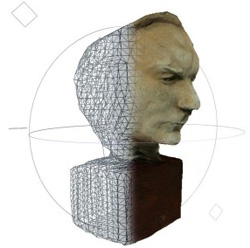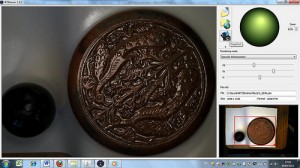Creative Digifest #SxSC
By Lorraine Warren
You never know what’s going to come out of an unconference-style event like SxSC Creative DigiFest.
Continue reading →
#SxSC: Chronotape
Peter Bennett will talk about Chronotape which is a tangible timeline for family history research, developed as part of the PATINA project within the Bristol Interaction & Graphics group. The chronotape explores the concept of using a tangible interface to control time, effectively turning the abstract concept of time into something that can be held and controlled.
Links
http://chronotape.com/
http://www.patina.ac.
Continue reading →
#SxSC outline schedule
This is an outline schedule of talks and demonstrations for #SxSC. Anyone attending is invited to talk and demo their work.
10.30am
Composer Benjamin Mawson investigates ways to use space as an expressive layer in studio-produced music. Developer Enrique Tomas has built a tool using GPS to interpret a listener’s position and movement in order to create a unique way of hearing music. Musical compositions can now be spread across a landscape, mapped to a territory.
Continue reading →
SXSC Demo: Tsinghua-Southampton Visualisation
The Tsinghua-Southampton exchange program was set up to serve as a platform for young researchers to exchange ideas on key issues within Web Science. The chosen project was to analyze, extract and visualize how the young perceived the world using online data. As part of the Visualization team Christopher Hughes will be demonstrating the chosen tools that we used to represent the data, highlighting some key issues and concerns.
Continue reading →
SXSC Presentations: Virtual RTI
James Miles will outline the use of Reflectance Transformation Imaging - a simple and cheap surface imaging tool - on existing three dimensional datasets in a virtual environment. He will show some worked examples, and evaluate the potential of the methodology within cultural heritage. He will focus on comparing the different datasets and will highlight the surface detail that could be overlooked through conventional means of visualisation.
Continue reading →
SXSC Presentation and demonstration of “Music You Can Walk Inside”
Music composed in the digital studio has always been heard on loudspeakers. All of the theatre and unpredictability of a performance is absent.
Composer Benjamin Mawson investigates ways to use space as an expressive layer in studio-produced music.
Developer Enrique Tomas has built a tool using GPS to interpret a listener’s position and movement in order to create a unique way of hearing music.
Musical compositions can now be spread across a landscape, mapped to a territory.
Continue reading →

SXSC Presentations: ICON – A content exchange mechanism for 3D Cultural Heritage Models
Ajay Chakravarthy and Paul Walland will demonstrate a new way of viewing digitised 3D objects from cultural heritage collections. They will talk about some of the cool applications they see for this kind of virtual model representation.
Paul is a manager at IT Innovation responsible for media-based collaborative projects and social networking.
Continue reading →
SXSC Presentations: Using the potential of high speed networks for real time distributed musical interactions
Alain Renaud will be talking about distributed music. Alain's research explores high-speed networks as a medium for developing real time interactive performances in a multiplicity of spaces. The technological usefulness of the latter is of limited importance if the various musical, sociological and philosophical aspects are not considered.
Continue reading →

SXSC Presentations: Re-Reading the British Memorial
We are starting to get in details of some of the presentations at SXSC:
The Re-reading the British Memorial project is investigating the potential for using a variety of technologies for the recording, interpreting and sharing of data about church memorials in the UK. Find out about them at: http://ourti.
Continue reading →
